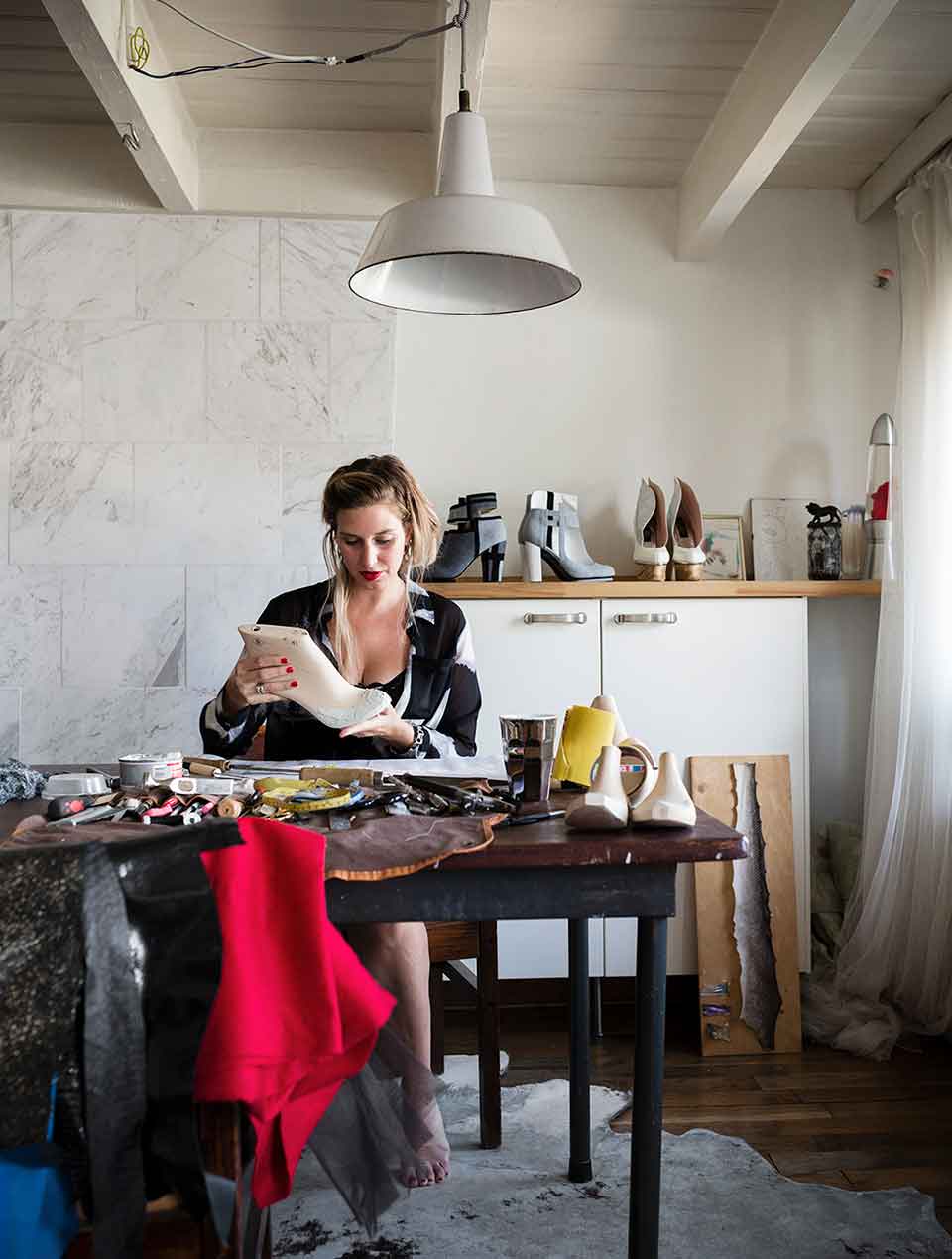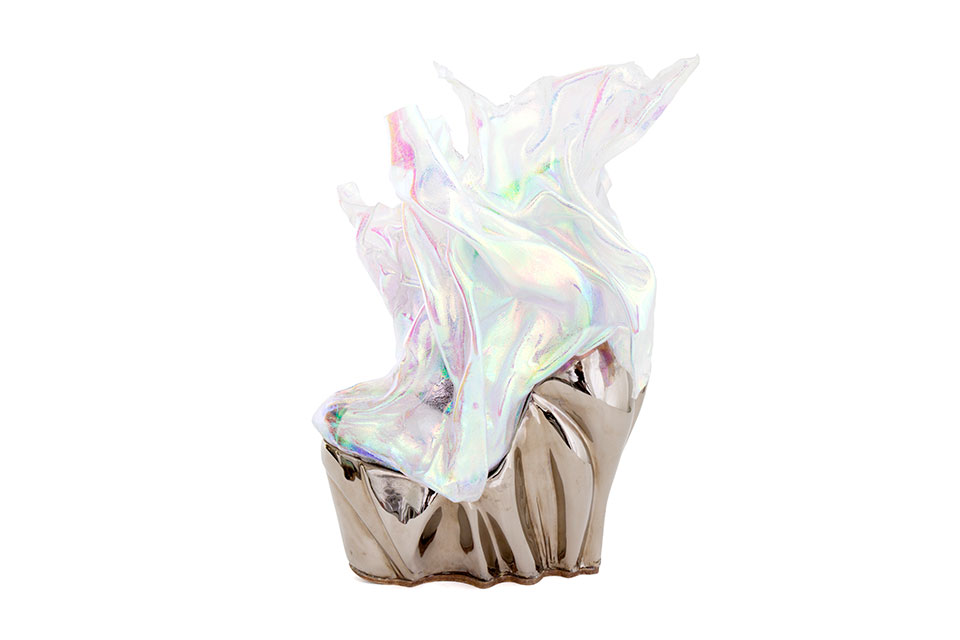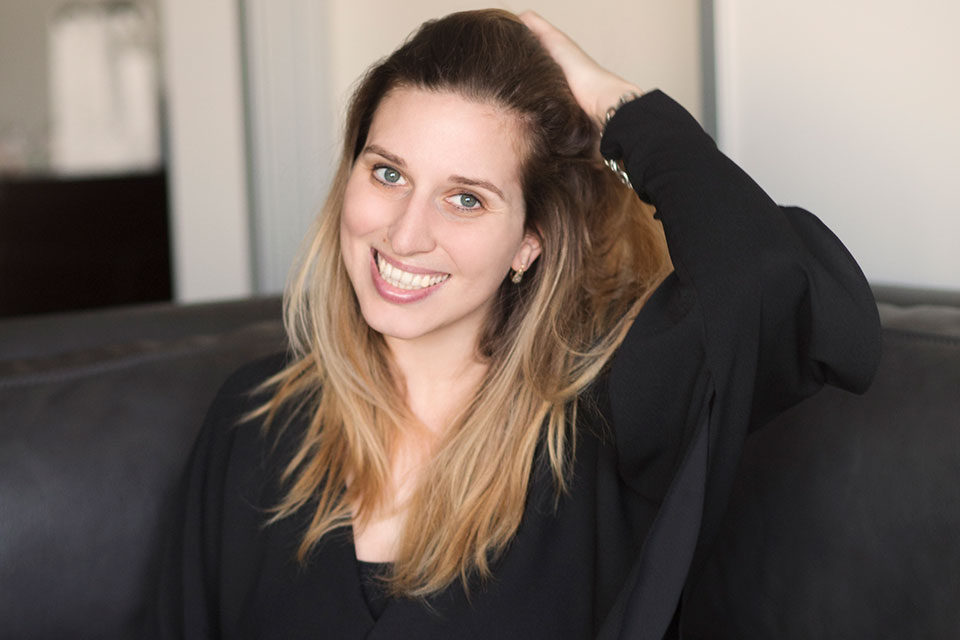Amber Ambrose Aurèle is a shoe designer, teacher, and art historicist. In 2012 she graduated as one of the first-generation Master Shoe Design at ArtEZ Fashion Masters. She searches for the boundaries between fashion and art, applying a conceptual approach to the design process and using it as an artistic expression.
Margaret Larmuth: What processes help you get into your work? Can you tell me a bit about your workspace and the elements that are important for you to start working?
Amber Ambrose Aurèle: I always need to have a concept. I can’t start with just a beautiful material, or just sketch a shoe design on a blank piece of paper. Of course I can, but then I am never happy with the design because I miss the concept, so these sketches and shoe designs never see the light. I always start with an idea, and then I begin to explore to find the correct base. For me, making a good design is the same as building a house: you don’t start with the roof first; you need to have a good foundation, and then you can start building.
In my work I love to tell stories. It starts with a fascination for “something,” then I will dive deeper into it. This could be collecting books, seeing films, reading, researching, making photos. Once I have done the preparation I can work anywhere—on a railway station, in the train, in a café, at home—it doesn’t matter, I can work anywhere in the sketching part (of course the making part is different). Even though I am working here and there I know what I am doing, and I am very organized. You may think this is a pile of fabric—but only I know that in the middle are special fabrics that I will be using for a new project. For other people it can look like a big mess, but in the middle of the chaos there is structure.

Larmuth: Who are or have been the biggest influences on your creative work?
Aurèle: I think travel has been a great influence. People that I meet when I am out of my comfort zone have often influenced me. I was always creative, and I was encouraged by my parents. My father is a sculptor and a painter, and now he is doing etchings and woodcuts, so we always had art in our home, and my mother was a teacher. Art was always there in my life. But travel will help you turn off your blinkers and look around you. As well, looking at art in all its forms helps me make my own vision clearer.
Larmuth: How do you evaluate yourself? What do you call yourself when people ask you?
Aurèle: For me, this is a very hard question. After I graduated from art school and people asked me what I was, I told everyone for a long time: “I’m graduated from the art school.” At this moment it is still a hard question for me to answer; yes, I have my BA in theater and film design–art direction, and an MA in shoe design, MA in art history, and MA in teaching.
So, what am I? I’m working as a shoe designer for my own brand, but for that I need to tell stories, and always think about the whole concept and try to connect everything, so art direction is still a big part of my work. I’m working as well as a freelance teacher, and sometimes where there is a nice opportunity, I’m also curating some exhibitions. So, I really do what feels good and what challenges me. So yes, I’m a shoe designer, teacher, and art historicist.
Larmuth: Do you start something new, even though you do not know how you will be able to do it?
Aurèle: Always. Knowledge is very important, and the technique that you want to use as well. But for me design is looking for the boundaries and trying to break them, so it is about making something new. And the most interesting things start with an idea, even though you don’t know how to make it at that moment! For example, the shoe collection I designed in 2012: Ice, Ice, Baby – “Hidden Messages in Water,” inspired by the work of Professor Masaru Emoto and his research on the molecule structure of water. I designed three pair of shoes, with a 3D-printed, metal asymmetrical heel. The connection to the sole is on one side, but there is a break point to center the heel. The inspiration was a wave coming to shore, and I used it to get the right result for the first time in a 3D-printing. Many people said this shoe-heel was impossible when I was working on it. The whole time I had to push the boundaries. And now here they are, back from exhibitions in Shanghai, Portugal, Oklahoma, Los Angeles.
Larmuth: Do childhood experiences and memories influence your work?
Aurèle: My childhood was so connected to art, and I was drenched in every aspect of it. My father’s studio space was behind our house, so I was there all the time. When he was making an artwork from clay, for example, I got my own clay to make something. I grew up in the forest, so I loved to be in the forests, see the seasons changing, and I loved to jump in puddles in the autumn. In 2014 I designed a shoe collection, L’amour, inspired by Shakespeare’s Ophelia. And because one of the important elements in the story for me is water, the same water where Ophelia was drowning, I wanted to do something with this, and I remembered my love for jumping in puddles and the splashing feeling. I tried to transform this element into a shoe design. I used Plexiglas and wrapping paper with an iridescent paper shine and created the shoe around that. It was rather complex, but in the end, I got it to work, and it was quite sensational. I have presented this collection and this shoe at the Amsterdam Fashion Week, but later it was in a lot of exhibitions, for example in Dubai, Portugal, America, Germany, and many fashion photo shoots—so this “splashing shoe” has had a lot of interest because I think it looks more like a sculpture then a shoe.

Larmuth: Artists’ texts can be interpreted as additional frames of reference and can also be seen as a link between one who visualizes and one who verbalizes. What part does text play in your work? Do you, for example, like using slogans and text in your designs? Do you need text to make your work understandable?
Aurèle: I try not to use text to make my work clear. My work is visual, so it should speak visually. But text is an important aspect for me, especially with my academic background as an art historicist; I always start to read and research rather than sketching. From that point of view, text is my starting point. I write a short synopsis of my concept, and this is important not just for me but for others, when I need to write about my work for exhibitions. Text gives me, personally, a framework. And then I create visually afterward.
Larmuth: To what extent does storytelling play a part in your work, and does it have any importance and significance?
Aurèle: Very important. I tell stories, and this is part of my visual work. I tell stories in visual images. I create a small world, so that people can explore this world for themselves. When you look at my work, all the collections feel like they are chapters from a bigger story. I distinguish myself from other designers, I think, by intellectual preparation before each of my collections. I always start with a research question, most of the time based on a female or group of females who will represent the collection.
Larmuth: What is the aim of your work? What do you want to say about your work?
Aurèle: My design process is about concept and an artistic expression and about stories—and every collection has as a starting point, a concept. I work a lot with contrast; an important contrast that you see back in almost all my work is the Femme Fatale and the Femme Fragile. These two extremes present in every woman are a clear contrast, and in almost all my designs you will find a contrasting, a tension, and that is what makes my work strong (I think). I like people to stop and think again when they see my work. I want them to find something new that they have never seen before. A shoe is also just a shoe. But when a woman is wearing a shoe, the dynamic changes and so does the woman. It is a small item from your wardrobe, but it can give tremendous confidence and help you with your own message, whether for a meeting, a date, hiking, or dancing. The design of the shoe can give you purpose and confidence and can give a woman power.
In my work, the shoe is not approached as a shoe but more so as a sculpture. This sets off both the dialogue between art and fashion and the relationship between the shoe and the human body. The designs under my label Amber Ambrose Aurèle distinguish themselves by balancing on the edge of fashion and art. I actively look for these boundaries, questioning them: What is the status of fashion and art? Where is the essence of both disciplines, what embodies the concept, and when is something part of it? As a designer, it’s very important to constantly renew and reshape yourself, assess your own abilities toward current societal needs and standards, but also the discipline you’re trying to master through your work—this brings forth many valuable insights.
In my work I look for subjects that express both power and vulnerability, both elegance and sturdiness. For me, shoes are a metaphor for power. My goal is to design collections in which women will feel powerful, sexy, confident, and feminine.
In doing so I use a crossover of different media and techniques. I want to build a bridge between my love for art, fashion, the human body, craftsmanship, and innovative techniques and materials. I want to offer critical reflection on our fashion industry by studying values like fair trade, sustainability, craftsmanship, and durability. My view is that as a designer (and artist) you are responsible for the designs (artworks) you make. As a designer, I am very aware of the fashion system and want to treat my participation in it with respect and thought. Instead of launching collections every season, I wish to focus on collections that are not designed with seasonality in mind: once a year I wish to launch pieces that are of high quality, timeless, stylish, and artistic; pieces you would be proud to wear for their heritage, value, and the way they have been developed.
Larmuth: Steve Jobs, the founder of Apple, said that creative people can make connections between seemingly unrelated ideas. Are you aware of this when you work?
Aurèle: Yes, I am aware this but don’t think about it. Normally, my friends will tell me that I see much more than they do when we are walking down the street together. This is because I see the details and these details excite me and lead me to cross-reference and reassociate, but as I said, this is normal for me, and I don’t think about it. And I think as well about how the more you see and learn, the easier it is to make connections. And that is something that I really love and always try to teach my students!
Larmuth: What books are you reading now?
Aurèle: A book about Leonardo da Vinci. Did you know that he made a lot of “to do” lists . . . like must measure the wall of the city, must check the tongues of birds, etc.? I relate to this as I am always making lists, not like da Vinci of course . . . he is a genius, but anyway, strange lists. Also, another book called The Highly Sensitive Person: How to Thrive When the World Overwhelms You, by Elaine N. Aron.
Larmuth: And what music do you like to listen to?
Aurèle: A wide variety of piano music, for example Ludovico Einaudi, strong female vocals, and everything in between. You can’t put it in one category. A friend of mine from the music industry told me once that you can find out about a person by asking what kind of music they listen to. But when I am working, I like to play music on repeat. This puts me in a trance state of high focus, and I can work for long periods of time like this . . . but it can drive others in the house crazy sometimes.
